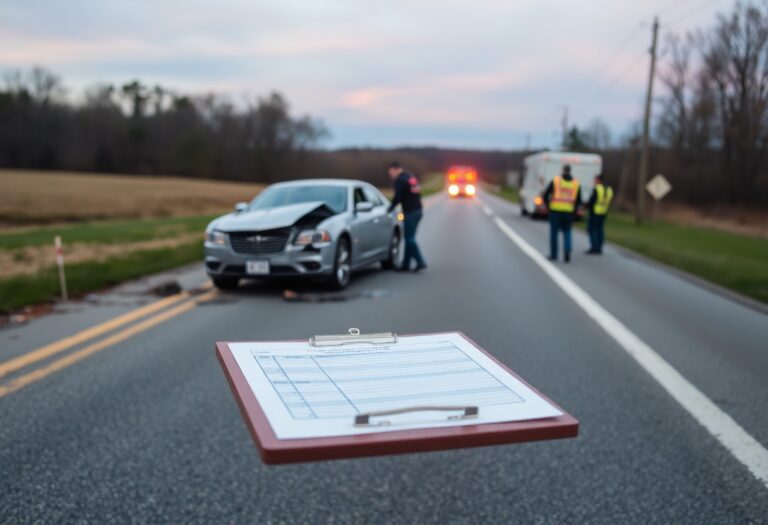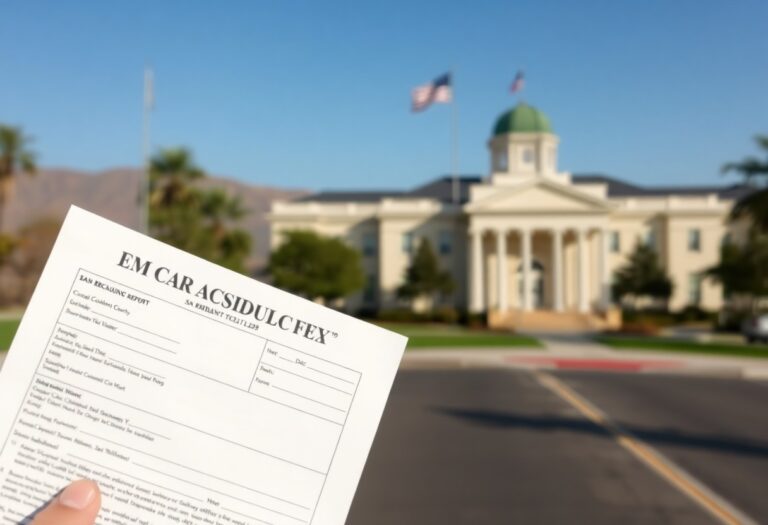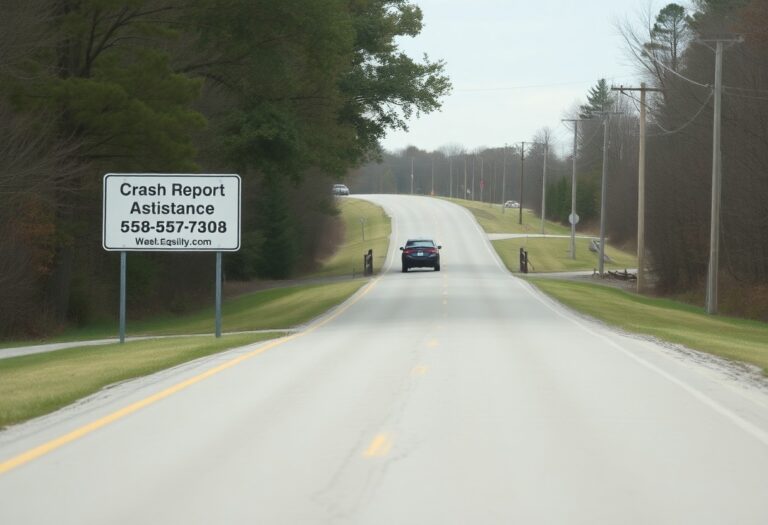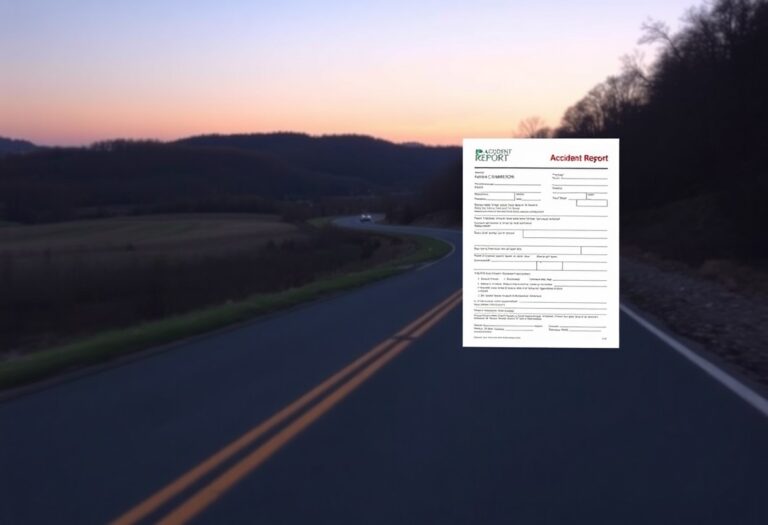Over the years, you might find yourself involved in a car accident, and accessing your accident report is vital for legal purposes and insurance claims. In Clay County, Minnesota, understanding the process for retrieving your accident report can save you time and help you navigate post-accident complexities. This guide will provide you with the crucial steps and contact information necessary to obtain your report, ensuring you have the support you need to move forward efficiently and effectively.
Navigating the Complexities of Car Accident Documentation
Understanding car accident documentation can feel overwhelming. Each report includes a variety of details that articulate the circumstances surrounding the incident. You’ll find that grasping the structure and significance of these documents is crucial if you want to pursue any claims or legal actions related to the accident.
Essential Elements of an Accident Report
Your accident report will typically include details such as date and time of the incident, location, names and contact information of individuals involved, and descriptions of injuries and vehicle damage. Officers on the scene also provide a narrative summarizing their observations, which can greatly impact your case later.
Common Legal Terms and Their Implications
Familiarity with legal jargon associated with car accidents can significantly impact your understanding of your situation. Terms like negligence, liability, and damages often appear in reports and legal filings, each carrying specific meanings that can influence the outcome of a claim or lawsuit. Recognizing these terms allows you to better navigate your case.
For instance, negligence refers to a driver’s failure to act with reasonable care, which often serves as a basis for legal claims. If you are determined to be at fault due to negligence, you could be held liable for damages incurred by the other party. Understanding liability helps identify who is legally responsible for the accident, which is crucial in insurance claims or court cases. Finally, grasping what constitutes damages can give you insight into the monetary compensation you may be able to pursue. Knowing these terms equips you to take actionable steps in the aftermath of a car accident.
Step-by-Step Guide to Retrieving Your Car Accident Report
| Step | Description |
|---|---|
| 1 | Contact the local law enforcement agency where the accident occurred. |
| 2 | Gather necessary information: your driver’s license, accident details, and parties involved. |
| 3 | Request the report either in-person or online, depending on availability. |
| 4 | Pay any associated fees for retrieving the report. |
| 5 | Receive your report, review it for accuracy, and store it securely. |
Where to Begin: Local Law Enforcement and Agencies
Initiating the retrieval process starts by identifying the local law enforcement agency involved in your car accident. In Clay County, this may be the Sheriff’s Office or the local police department. You can make inquiries over the phone or by visiting them in person, armed with details like your incident report number, date of the accident, and involved parties’ information. They can provide guidance on specific procedures, including filing requests and obtaining necessary forms.
Online Resources for Quick Access
In addition to in-person inquiries, several online resources can help expedite the retrieval of your car accident report. Many law enforcement agencies have digital platforms where you can submit a request or access reports. Clay County’s website may feature an online report retrieval section where you can fill out a form, upload identification, and pay fees digitally, making the process more convenient and efficient.
Utilizing the online resources provided by Clay County enhances your ability to retrieve accident reports swiftly. For instance, you can visit the official county website, where instructions for report requests are clearly laid out. Some agencies may even allow you to track the status of your report request online, ensuring you’re informed and can receive your documentation without unnecessary delays. Consider checking if they also provide downloadable forms or FAQs section that can further facilitate your retrieval efforts.
Overcoming Common Obstacles in Report Retrieval
Retrieving your car accident report can present several challenges, from bureaucratic red tape to administrative errors. Knowing how to navigate these obstacles can significantly speed up your process. Often, being aware of the specific requirements of your local law enforcement agency can help you avoid unnecessary delays. Additionally, tracking your request and understanding your rights can empower you during this sometimes frustrating retrieval process.
Delays and Errors: What to Watch For
Common pitfalls in report retrieval include long processing times and inaccuracies within the report itself. If your request is delayed, contact the agency to ensure your forms were received and filed correctly. Be vigilant for misspellings or incorrect details in the report that could affect your case. If you notice any errors, act quickly to request corrections, as these can delay insurance claims or legal proceedings.
When to Seek Legal Assistance
Consider contacting a legal professional if you face repeated setbacks in obtaining your report or if you uncover significant errors that could impact your claim. Legal experts can provide valuable guidance, advocating for you to ensure the report accurately reflects the incident. Additionally, if negotiations with insurance companies become contentious due to missing or erroneous documentation, legal support can simplify the process and help you secure the compensation you deserve.
Situations involving complex car accident claims often necessitate legal guidance. For instance, if your report is critical to proving liability but contains discrepancies, a lawyer can assist in gathering additional evidence or testimonies to support your case. They can also navigate the tense back-and-forth with insurers, ensuring deadlines are met and your recovery isn’t hindered by bureaucratic issues. Having professional representation can also pressure agencies to expedite your report’s correction, thus benefiting your overall case outcome.
Understanding the Impact of Your Accident Report
Your accident report serves as an official document that outlines the specifics of the incident, including the parties involved, damages, and any injuries sustained. This report plays a significant role in determining fault and can affect liability assessments in insurance claims. You’ll want to understand how this document influences not only your financial recovery but also the potential legal ramifications associated with your accident.
How Accident Reports Influence Insurance Claims
Insurance companies rely heavily on accident reports to evaluate claims. The details recorded in the report, such as the names of involved parties and any witness statements, directly impact the determination of fault. For instance, if the report indicates you were at fault, this could lead to increased insurance premiums or difficulty in receiving compensation for damages. Having an accurate report can enhance your chances of a favorable outcome in your claim.
The Role of Accident Reports in Legal Proceedings
In legal settings, accident reports are considered valuable evidence in personal injury cases. They provide a factual basis for the events leading up to the accident and can be used to establish negligence. For instance, if the report cites traffic violations or unsafe driving behavior, this information can significantly strengthen your position in negotiations or during litigation. Ultimately, the clarity and accuracy of your accident report can influence the court’s perception of liability and damages, impacting any settlements or judgments.
Ensuring Accuracy: Reviewing and Amending Your Report
After obtaining your car accident report, thoroughly review it for discrepancies or inaccuracies. Meticulously check details such as the names of involved parties, dates, times, and location descriptions. Any errors can lead to complications in insurance claims or legal proceedings, making it vital to ensure the report reflects the events accurately. If you find inconsistencies, taking prompt action to address them will help protect your rights and streamline any claims process.
How to Request Changes or Corrections
To initiate changes to your report, contact the law enforcement agency that issued it. Prepare to provide identification and any supporting documentation that highlights the inaccuracies. Be clear and concise in your request, outlining specific details that need amending. Each agency may have different procedures, so following their guidelines closely will facilitate a smoother correction process.
The Importance of Timeliness in Amendments
Addressing errors in your car accident report should occur as soon as possible. Swift amendments ensure that your file remains accurate during any ongoing investigations or insurance claims, allowing you to avoid potential misunderstandings that could affect your case’s outcome. Delays in corrections may hinder your ability to secure fair compensation for damages.
Taking timely action is especially relevant when considering the influence of a report on potential legal proceedings. Statistical evidence suggests that reports corrected within 14 days are significantly more likely to yield favorable outcomes in claims disputes. Thus, prioritizing prompt amendments not only preserves the integrity of your report but also bolsters your position in legal matters, ensuring every detail upholds your side of the story. Don’t let inaccuracies linger and complicate your efforts for resolution.
Summing up
Following this guide, you should feel equipped to navigate the process of retrieving your car accident report in Clay County, Minnesota. By understanding the steps involved and knowing where to direct your inquiries, you can efficiently obtain the necessary documentation. Whether it’s for insurance purposes or personal records, knowing how to access your report will help ensure you stay informed and prepared. Should you encounter any challenges, don’t hesitate to reach out to the appropriate authorities for assistance.













